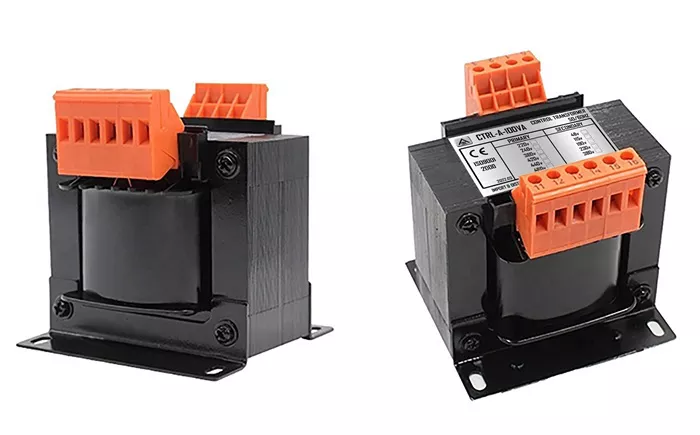Control transformers are specialized electrical devices that play a crucial role in various industrial and commercial applications. They are designed to provide stable, low-voltage power to control circuits and devices, ensuring the safe and efficient operation of machinery and electrical systems. Understanding the functions and features of control transformers is essential for anyone involved in electrical engineering or industrial automation.
The Basic Function of a Control Transformer
Voltage Conversion
The primary function of a control transformer is to step down the supply voltage to a lower, more manageable level suitable for control circuits. This is achieved through electromagnetic induction, where the transformer converts a higher primary voltage to a lower secondary voltage. For example, a control transformer might convert 480V to 24V, providing the necessary power for control devices such as relays, solenoids, and contactors.
Electrical Isolation
Control transformers also provide electrical isolation between the primary and secondary circuits. This isolation is crucial for protecting sensitive control components from electrical noise, surges, and transients that may be present in the primary power supply. By isolating the control circuits, these transformers enhance the safety and reliability of the overall system.
Stable Output
Control transformers are designed to maintain a stable secondary voltage, even when the input voltage fluctuates. This stability is essential for the reliable operation of control circuits, as variations in voltage can lead to erratic behavior and malfunctioning of the devices. Control transformers achieve this through low impedance and tap settings, which allow for precise voltage regulation.
Types of Control Transformers
Control Voltage Transformers
Control voltage transformers are used to convert high voltage to a lower control voltage, such as 208V to 120V or 240V to 24V. These transformers are common in industrial and commercial applications where precise control and protection of sensitive electrical components are required.
Enclosed Control Transformers
Enclosed control transformers are designed with protective housing to provide additional safety and protection. This enclosed design not only protects the transformer itself but also improves the safety of installation and operation, making them suitable for harsh industrial environments.
Control Power Transformers
Control power transformers are specifically designed to provide a stable low-voltage power supply for various electrical control systems. They are used to convert high voltage to a lower voltage suitable for control circuits, ensuring the safety and normal operation of these circuits and equipment.
Key Features and Benefits of Control Transformers
Stable Voltage Output
Control transformers ensure consistent low-voltage power for control circuits, preventing voltage fluctuations. This stability is crucial for the reliable operation of control devices and helps prevent damage to sensitive components.
Electrical Isolation
By providing electrical isolation between the primary and secondary windings, control transformers protect control circuits from power surges and spikes. This isolation enhances system safety and reduces the risk of faults.
Noise Filtering
Control transformers filter out electrical noise and interference, ensuring smooth and accurate operation of control circuits. This feature is particularly important in environments where electrical interference is common.
Durability
Control transformers are built with high-quality materials and robust design to withstand harsh industrial environments. They are designed to be rugged and reliable, ensuring consistent power delivery even in demanding conditions.
Applications of Control Transformers
Industrial Machinery
Control transformers are essential in industrial machinery, powering key components such as relays, solenoids, and timers. They ensure that these components function reliably, even in environments where electrical loads fluctuate significantly.
Heating Systems
Furnace control transformers are used in heating systems to provide stable power to the furnace’s control circuits and related components. These transformers ensure that the heating system operates efficiently and safely.
Automation Systems
Control transformers are widely used in automation systems, such as automated assembly lines and robotics. They provide the necessary voltage for control devices and protect sensitive components from electrical surges and noise.
Design Considerations for Control Transformers
Voltage Regulation and Stability
Control transformers are designed to maintain stable output voltage, even when input voltage or load conditions fluctuate. This is achieved through low impedance and tap settings, which allow for precise voltage regulation.
Power Ratings and Efficiency
Selecting the right power rating is crucial for control transformer design. Engineers must calculate the maximum expected load to ensure the transformer can supply sufficient power without overloading. Efficiency is also important, as energy losses during voltage transformation can affect overall system performance and operating costs.
Conclusion
Control transformers are essential components in modern electrical systems, providing stable, low-voltage power to control circuits and devices. Their ability to regulate voltage, provide electrical isolation, and filter out noise makes them indispensable in various industrial and commercial applications. By understanding the functions and features of control transformers, engineers and technicians can ensure the safe and efficient operation of electrical systems.
Related Topics:

